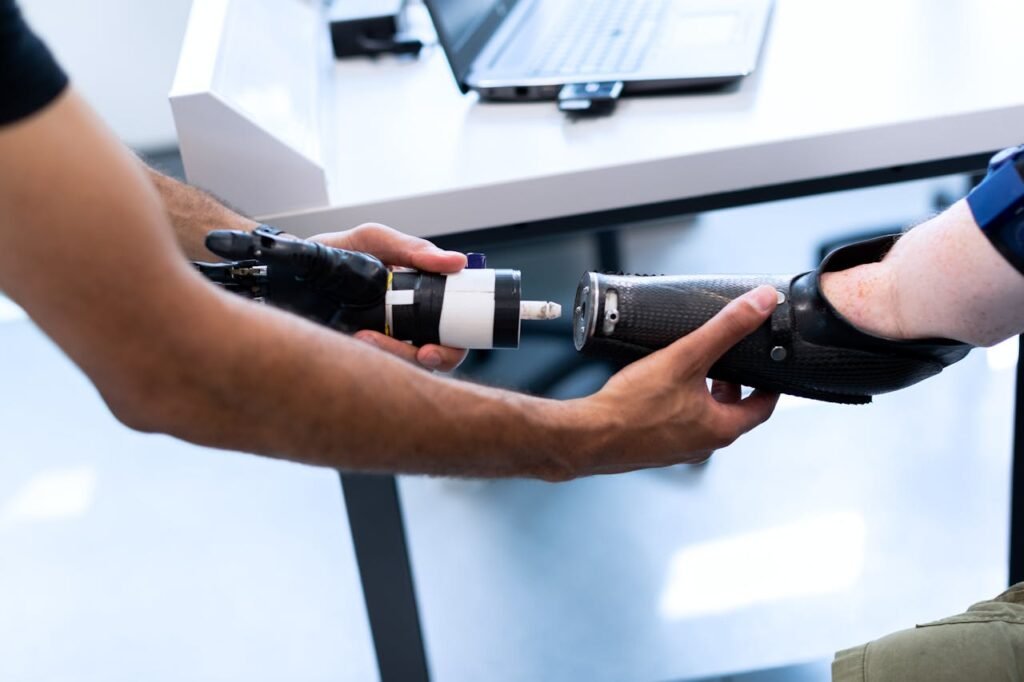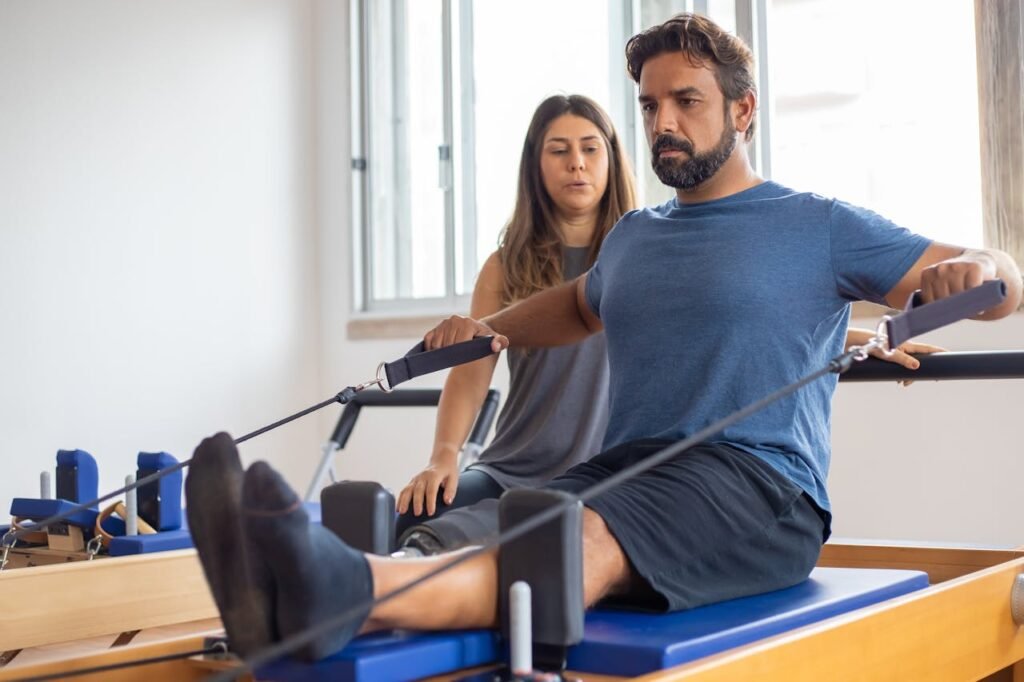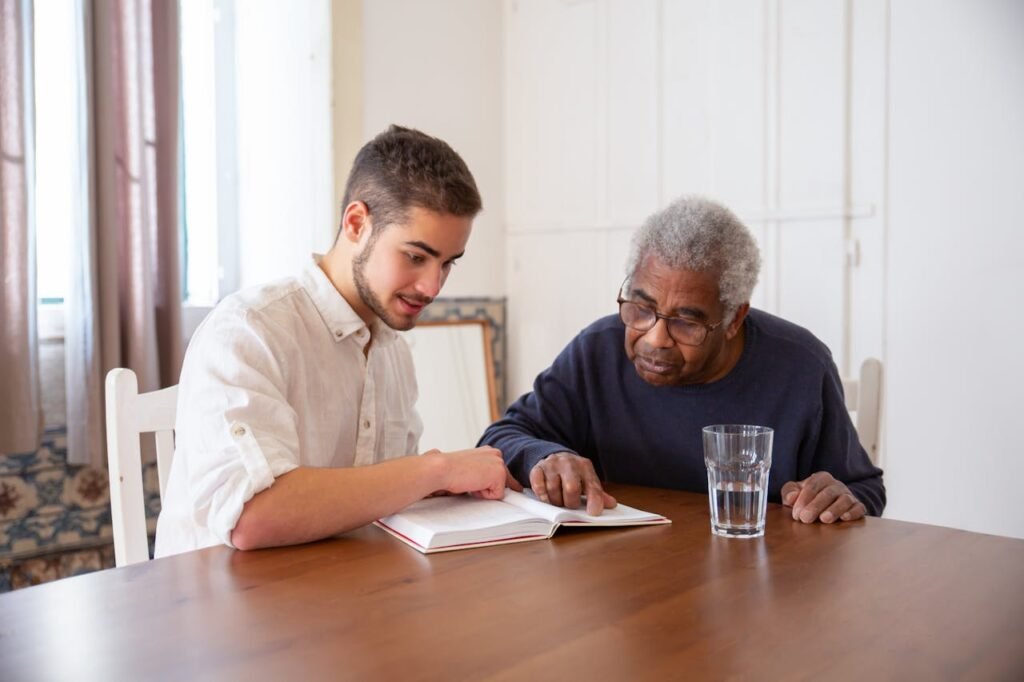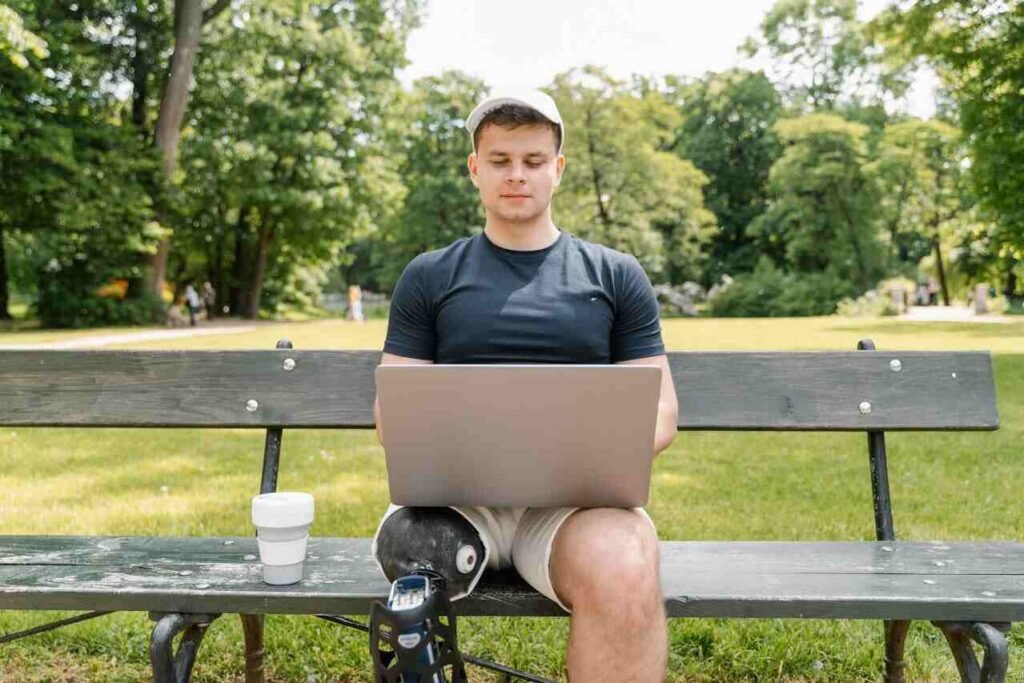Advocating for your needs in public spaces is not just about standing up for yourself—it’s about creating environments where everyone feels included, respected, and valued. Public spaces should be accessible to all, but the reality is that barriers often exist, whether they’re physical, social, or systemic. Learning how to voice your needs effectively can transform these spaces, not only for yourself but for others who may face similar challenges.
In this guide, we’ll explore practical strategies for advocating in a way that fosters understanding and drives meaningful change. From preparing for conversations to addressing common obstacles, you’ll gain tools to navigate public spaces with confidence.
Understanding Your Rights in Public Spaces
The first step to advocating for your needs is understanding your rights. Many countries, including India, have laws and regulations designed to protect the rights of people with disabilities.
These laws cover accessibility in public spaces, equal treatment, and reasonable accommodations. Knowing what you’re entitled to ensures you can make informed requests and address violations confidently.
Accessibility Laws in India
In India, the Rights of Persons with Disabilities (RPWD) Act, 2016, outlines specific provisions for accessibility. It mandates that public spaces such as parks, transportation systems, and government buildings must be designed to accommodate people with disabilities. This includes ramps, tactile flooring, accessible restrooms, and elevators, among other features.
If you encounter a space that fails to meet these standards, you have the right to raise the issue with the relevant authorities. Advocating based on legal guidelines often carries more weight, as it shifts the conversation from personal preferences to statutory obligations.

The RPWD Act and Its Implications
In India, the Rights of Persons with Disabilities (RPWD) Act, 2016, is the cornerstone of disability rights. It mandates that public spaces and services be accessible, inclusive, and free of discrimination.
This includes infrastructure such as government buildings, transportation systems, parks, schools, and commercial establishments like malls and restaurants.
For businesses, compliance with the RPWD Act is not just about avoiding penalties—it’s about creating spaces where every individual feels welcome.
Accessible design features like ramps, elevators with Braille buttons, tactile pathways, and accessible restrooms are tangible demonstrations of a business’s commitment to inclusion. Failing to implement these can result in not only legal consequences but also reputational damage.
How International Conventions Influence Local Practices
India is a signatory to the United Nations Convention on the Rights of Persons with Disabilities (UNCRPD), which further emphasizes the importance of accessibility and inclusion. This global framework influences local laws and encourages countries to uphold the principles of dignity, autonomy, and equal participation for individuals with disabilities.
Businesses that align their practices with international standards not only ensure compliance with evolving regulations but also position themselves as forward-thinking and globally conscious.
By integrating accessibility measures inspired by the UNCRPD, businesses can enhance their appeal to international customers and investors, who increasingly value corporate responsibility.
The Role of Public Sector Entities
Government offices, public transport systems, and community spaces have a critical role in setting the standard for accessibility. When these spaces are designed to be inclusive, they create a ripple effect, encouraging private entities to follow suit.
For individuals advocating for their needs, understanding the obligations of public sector entities can strengthen their case. For instance, if a government building lacks wheelchair access, citing the RPWD Act’s provisions for public infrastructure accessibility can be a powerful way to push for change.
Businesses that partner with public sector entities to improve accessibility—such as sponsoring adaptive features in public spaces—demonstrate leadership and gain goodwill.
Leveraging Accessibility as a Competitive Advantage
For businesses, accessibility should not be seen as merely a compliance exercise but as a strategic advantage. Accessible public spaces attract a broader customer base, including individuals with disabilities, families with young children, and elderly patrons. By aligning with legal requirements and going beyond them, businesses can create environments that are more welcoming to all.
For example, a mall with wide corridors, ample seating, and clear signage in multiple formats (visual, tactile, and auditory) ensures that customers of all abilities can navigate comfortably. This not only enhances the customer experience but also encourages repeat visits and positive word-of-mouth recommendations.
Educating Staff on Accessibility Rights
An often-overlooked aspect of advocating for accessibility is the role of frontline staff. For businesses, training employees to understand accessibility rights and respond empathetically to concerns is vital.
Staff members who are aware of laws like the RPWD Act and understand how to assist individuals with disabilities can prevent misunderstandings and create a welcoming atmosphere.
For individuals advocating for their needs, addressing staff directly and referencing relevant laws can lead to immediate action. For instance, if a customer encounters an inaccessible entrance, explaining the RPWD Act’s requirements to a manager and suggesting alternatives like portable ramps can prompt a quick resolution.

Empowering Businesses to Act
Understanding rights is as much about empowerment as it is about compliance. For businesses, embracing accessibility as part of their identity demonstrates a genuine commitment to inclusivity.
By actively engaging with advocacy groups, participating in accessibility audits, and integrating universal design principles, businesses can align themselves with the broader movement toward equitable public spaces.
Individuals who advocate for their needs in public spaces are not just addressing personal barriers—they are driving systemic change. By grounding their advocacy in a solid understanding of legal rights, they can make public spaces more inclusive for everyone while encouraging businesses to recognize the far-reaching benefits of accessibility.
Preparing to Advocate
Advocating for your needs requires preparation. Whether it’s requesting assistance in a public transport system or speaking to a manager about accessibility in a store, having a clear plan can make a significant difference in the outcome.
Researching Solutions
Once you’ve identified the barriers, research potential solutions. For instance, if an ATM lacks ramps, you could suggest installing a portable ramp as an interim measure. Offering practical recommendations shows that you’re not just pointing out problems but actively contributing to solutions.
Building Confidence
Speaking up can feel intimidating, especially if you’re unsure how others will respond. Practicing your communication in advance can help. Rehearse what you want to say, focusing on staying calm and assertive. If possible, role-play with a friend or family member to refine your approach.
Communicating Your Needs Effectively
Once you’re prepared, the next step is to communicate your needs in a way that promotes understanding and encourages action. Effective advocacy often comes down to how you present your concerns and engage with others.
Choosing the Right Time and Place
Timing can influence how your message is received. If you need to speak with a manager, choose a moment when they’re not busy handling other tasks.
Similarly, try to approach staff in a calm, private setting rather than a crowded or chaotic environment. This ensures you have their full attention and can explain your needs without distractions.

Being Clear and Direct
Clarity is crucial when advocating for your needs. State the issue clearly and describe how it affects you.
For example, if a library lacks accessible seating, explain how this impacts your ability to use the space comfortably. Avoid vague complaints; instead, focus on specific barriers and actionable changes.
Framing the Conversation Positively
People are more likely to respond constructively when approached with positivity. Instead of framing your concern as a demand, try emphasizing collaboration.
For instance, you could say, “I’ve noticed this space could be improved for wheelchair users. This approach invites dialogue and positions you as a partner in finding solutions.
Highlighting the Benefits of Accessibility
When discussing changes, emphasize how they benefit everyone, not just individuals with disabilities. Accessibility often improves the overall experience for all users.
For instance, ramps and elevators help parents with strollers, elderly individuals, and delivery personnel in addition to wheelchair users. Framing your request in terms of broader inclusivity can make it more compelling.
Dealing with Resistance
Despite your best efforts, you may encounter resistance. Some people might lack awareness of accessibility issues, while others may view accommodations as unnecessary or costly. Knowing how to address these challenges is key to successful advocacy.
Staying Calm and Persistent
Resistance can be frustrating, but losing your temper often makes the situation worse. Stay calm and patient, even if the other person appears dismissive. Reiterate your concerns politely and emphasize why addressing the issue is important. Persistence often pays off, especially when combined with a respectful tone.
Using Empathy
Many barriers exist because of a lack of understanding. Help others see the issue from your perspective by sharing personal experiences or examples. For instance, you might say, “Without ramps, I can’t access this building independently, which limits my ability to participate in community activities.” Personal stories can humanize the issue and build empathy.
Escalating When Necessary
If your initial efforts are unsuccessful, don’t be afraid to escalate the issue. This could involve speaking to a higher authority, filing a formal complaint, or reaching out to advocacy organizations for support. Sometimes, bringing additional voices into the conversation helps amplify your concerns and ensures they’re taken seriously.
Leveraging Support Systems
Advocating for your needs becomes more effective when you involve others. Support systems, whether personal or organizational, can amplify your voice and increase the likelihood of achieving your goals.
Engaging Allies
Family, friends, and colleagues can serve as valuable allies in your advocacy efforts. When others witness the barriers you face, they’re more likely to support your cause.
For example, a friend accompanying you to an inaccessible restaurant can add weight to your concerns by sharing their perspective with the management.
Community allies are equally important. Disability advocacy groups often provide resources, advice, and networks to help you navigate challenges. By connecting with these groups, you gain access to collective knowledge and shared experiences that can strengthen your approach.

Utilizing Social Media
Social media is a powerful platform for raising awareness about accessibility issues. By sharing your experiences online, you can highlight barriers in public spaces and call for change.
Ensure your posts remain constructive, focusing on solutions rather than blame. Tagging organizations or public officials responsible for these spaces can also draw attention to your concerns.
Additionally, social media campaigns allow you to reach a wider audience, building momentum for systemic change. For instance, a viral post about an inaccessible tourist attraction can pressure authorities to address the issue more urgently.
Collaborating with Advocacy Organizations
Advocacy organizations often have the expertise and resources needed to address systemic barriers. If you encounter significant resistance or feel overwhelmed by the process, these organizations can step in to provide guidance or representation.
Many groups specialize in specific areas, such as transportation, education, or public infrastructure, making their support particularly effective.
For example, if you struggle to navigate an inaccessible public transit system, organizations like the Disability Rights Alliance India can help you file complaints or push for policy changes. Collaborating with such groups ensures your efforts are backed by legal knowledge and community support.
Advocating Through Education
Education is a critical tool for fostering lasting change. When you educate others about the importance of accessibility, you not only address immediate concerns but also contribute to a broader culture of inclusion.
Raising Awareness
Many barriers exist simply because people are unaware of the challenges faced by individuals with disabilities. By raising awareness, you can help create environments where accessibility becomes a shared priority.
This could involve hosting workshops, giving presentations, or sharing articles and videos that highlight the importance of inclusion.
For instance, businesses often underestimate how inaccessibility affects their customer base. By educating store managers or event organizers about how accessibility can boost customer satisfaction and retention, you can shift their perspective and encourage action.
Encouraging Empathy in Policy Makers
Advocating for systemic change often requires engaging with policymakers and government officials. Use data, stories, and visuals to make a compelling case for accessibility improvements.
For example, presenting before-and-after images of accessible public spaces can demonstrate the transformative impact of inclusive design.
Additionally, showing the economic and social benefits of accessibility can persuade officials to prioritize your concerns. Studies have shown that inclusive public spaces attract more visitors, enhance community engagement, and stimulate local economies—making accessibility a win-win for everyone.

Advocating for Long-Term Change
Advocating for accessibility isn’t just about addressing immediate needs—it’s about creating lasting change. By focusing on systemic improvements and fostering a culture of inclusion, you can help ensure that public spaces become universally accessible over time.
Promoting Inclusive Design
One of the most effective ways to drive long-term change is by advocating for inclusive design. Inclusive design ensures that spaces, services, and products are usable by as many people as possible, regardless of their abilities. Unlike retrofitting existing spaces to meet accessibility standards, inclusive design incorporates accessibility from the outset.
Engaging with architects, urban planners, and developers can help bring inclusive design to the forefront of public infrastructure projects. Share insights about how accessible features like ramps, tactile pathways, and wide doorways benefit not only individuals with disabilities but also parents with strollers, senior citizens, and individuals with temporary injuries.
You can also encourage local governments to adopt universal design principles in public projects. Lobbying for policies that prioritize accessibility ensures that new developments set a higher standard for inclusion.
Holding Organizations Accountable
Accountability is a cornerstone of lasting change. When public spaces fail to meet accessibility standards, it’s essential to hold the responsible organizations accountable. This may involve filing formal complaints, leveraging media coverage, or seeking legal recourse if necessary.
For instance, if a public library does not have accessible restrooms, you can report the violation to the local authorities, referencing relevant laws like the RPWD Act. Documenting the issue with photos or videos strengthens your case, providing tangible evidence of the barriers.
By consistently calling out inaccessibility and celebrating improvements, you help reinforce the importance of compliance and encourage others to follow suit.
Advocating for Public Education Campaigns
Public education campaigns play a critical role in shifting societal attitudes toward accessibility. Advocate for initiatives that raise awareness about the rights of individuals with disabilities and the importance of creating inclusive environments.
Governments and organizations often respond positively to proposals for collaborative campaigns. For example, you could work with local authorities to develop advertisements or workshops that highlight common accessibility challenges and practical solutions. These campaigns can foster empathy, reduce stigma, and inspire proactive change in communities.
Building Momentum Through Success Stories
Sharing success stories of improved accessibility can inspire others to take action. For instance, if a public park installs ramps or adds tactile pathways after your advocacy efforts, share this achievement widely.
Highlighting these positive changes not only motivates others to advocate for their needs but also demonstrates to businesses and governments that accessibility initiatives are achievable and beneficial.
Success stories also provide tangible examples of how advocacy can transform public spaces, building momentum for larger-scale changes. By showcasing the outcomes of your efforts, you create a ripple effect that encourages further progress.
Empowering Others to Advocate
The power of advocacy lies in its ability to inspire collective action. By empowering others to speak up for their needs, you amplify the impact of your efforts and contribute to a broader movement for accessibility.
Sharing Knowledge
Share the strategies and lessons you’ve learned from your advocacy journey with others in your community. This could involve hosting workshops, writing blogs, or creating social media content that provides practical tips for navigating public spaces and advocating for change.
For example, if you’ve successfully campaigned for accessible seating at a local theater, share the steps you took and the resources you used. Providing actionable advice helps others feel equipped to tackle similar challenges in their own communities.

Mentoring Emerging Advocates
Mentorship is a powerful way to nurture future advocates. By mentoring individuals who are new to accessibility advocacy, you help build their confidence and skills. Encourage them to identify barriers, research solutions, and practice effective communication techniques.
Mentorship also creates a sense of solidarity, reminding individuals that they’re not alone in their efforts. A supportive network of advocates can achieve far more collectively than any single person working alone.
Conclusion
Advocating for your needs in public spaces is about more than overcoming individual barriers—it’s about creating a world where accessibility and inclusion are the norm. By understanding your rights, communicating effectively, and leveraging support systems, you can drive meaningful change in your community.
At Robobionics, we believe that accessibility is a shared responsibility. As a leader in prosthetics innovation, we’re committed to empowering individuals with tools and resources that restore independence and dignity. Our products, like Grippy™, are designed to help you navigate public spaces with confidence and ease.



